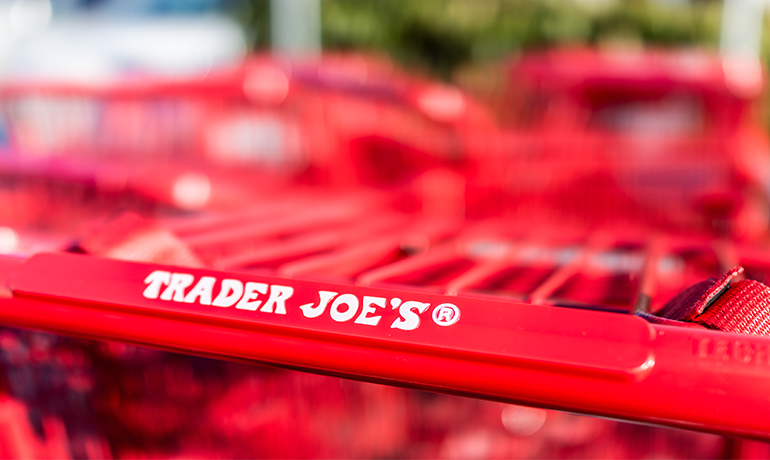Many consumers would like to do all of their grocery shopping at one store (“one-stop shopping”). I’m one of them. I’d prefer to buy everything I need in one go. That was the promise of the "supermarket."
The problem for me is that I can’t buy everything I want at one store at a desirable price and quality. I also get easily overwhelmed when I’m in supermarket behemoths such as Costco and Safeway or superstores such as Target and Walmart. And I’m not alone in this. In fact, half of grocery shoppers in the US visit three or more stores to get their food and household supplies.
Construction software faces a similar situation.
I have heard many times that field users (e.g., superintendents) or office users (e.g., project managers or project engineers) want to have one location to get all of their project documents.
But most construction users are not one-stop shoppers. Around 63% of respondents to the 2020 JBKnowledge Construction Technology Survey report using three or more construction applications. Despite using multiple applications, many contractors actually try to create a one-stop shop experience - nearly 85% of respondents in the JBKnowledge survey reported transferring data between their different applications.
The takeaway is that even though people want a one-stop shop experience, it doesn’t happen. Neither grocery shoppers nor construction professionals go to one store for everything they need. Nevertheless, we all still want the one-stop shop experience.
How Complexity Gets in the Way of the One-Stop Shop for Everyone
It is difficult to provide an experience that satisfies everyone’s needs. One-stop shops can fail at satisfying all of a customer’s needs because the shopping experience is so complex.
Take Costco for instance. Costco has everything you would need - it is a supermarket. Shoppers go there to get all their shopping done in one trip. But, from my experience, it is not the easiest to find what you want, and in the size/form you want. Although Costco tries to serve all customers, the reality is that Costco best serves a specific type of customer - suburban shoppers. This makes sense, as most of its stores are in suburban locations.
Just as Costco has the supply to support one-stop shopping for groceries, there are construction softwares today that are one-stop shops for project information and documentation. These construction softwares house all the documentation for a construction job. However, the software has not been built for those who use the documentation, rather those who adminster and distribute the documents.
The software has been built for someone like the Project Manager.
The Project Manager wants a one-stop shop that includes:
- Ability to easily distribute software licenses
- Ability to add information into the system and update documents on a continual basis, with minimal administration required and ample notification preferences
- Ability to navigate between projects easily
- Ability to access documents
- Ability to implement and use a document workflow for General Contractor and Subcontractor coordination
While the software built today is very good and provides value, that value is mostly realized by those who work in the office side of construction. There is also a need to provide one-stop shopping for other roles.
Applying the Trader Joe’s Approach: Creating a Targeted One-Stop Shop for the Field Worker
Trader Joe’s provides a different type of one-stop shopping experience from Costco: shoppers can quickly buy their full basket of groceries while also knowing that what they buy is quality. Trader Joe’s caters to singles, couples, and small families, or as the founder Joe Coulombe likes to say, “overeducated and underpaid shoppers.” With this focus in mind, Trader Joe’s can maintain a small-chain feel while servicing 10.5% of US adults each month - it is a supermarket with a grocery store feel. That is more than Whole Foods, which accounts for only 6.3%. Even being the large company that they are, Trader Joe's is known for adapting to what customers want, even changing their packaging. Alan Cooper, the “Father of Visual Basic,” said, “If you design for everyone, you delight no one.” Trader Joe’s understands this as a grocery store, and it has played a part in their success.
Construction could benefit from using this targeted one-stop shopping approach. In the race to digitize information, construction software has been built to house all the project information. However, the software can be difficult to extract information from. The software is marketed for everyone, but really only built for a few types of users.
Consider those who work in the field, specifically the Field Supervisor, aka the Field Foreman. Unlike the Project Manager, the Field Foreman is not required to upload documents as part of the job. Instead, the Foreman simply needs to be able to access documents quickly. For example, the Foreman might need to access 1 out of the total 72 lighting fixture submittals and find one equipment number on that submittal. Or the Foreman needs to search through a folder of RFIs to see if any relate to the ceiling work for that day.
Today, the Foreman does not have a one-stop shop of information built for them. But, that does not mean it is not needed.
The Field Foreman wants a one-stop shop that includes:
- Quick access to all the document types [primary goal]
- Ability to group and share documents that your crew can reference and collaborate on
- Ability to read, make, and respond to markups
- Ability to define a list of issues, tasks, and material lists and share with others
Unfortunately for the Field Foreman, current construction document management software does not exist that would meet all of these needs. In particular, the primary criteria they have, which is to access all the documents quickly, is not met.
It feels simple, but today most field workers do not have quick access to all documents on the jobsite. Drawings are stored in one software platform, submittals are stored on a company internal server, and work orders are very likely carbon copy papers.
It is time to focus on the one-stop shop experience for those in the field. Let’s remove the daily situation where the Field Foreman needs to embark on a hero's quest to find project information.
Conclusion
Although construction software companies would like to build one platform that serves all the needs of all the users in the construction industry, the current one-stop shop approach is targeted towards the needs of office workers. A side effect of meeting the office worker’s needs is that document retrieval has become complex. Although there are one-stop shops for construction project information, they are not well suited for everyone.
For software to best serve the construction industry, we need to have solutions built like Trader Joe’s - with the one-stop shopping criteria for specific users in mind. Once we have multiple one-stop shopping solutions built for specific users, we can better work to make the nirvana of a one-stop shopping experience for all a reality, rather than a myth.
CATEGORIES
- Construction Technology (23)
- Construction Document Management (14)
- Construction Document Search (13)
- DADO (8)
- Document Management Systems (8)
- Intelligent Search (6)
- Smart Forms (4)
- intelligent document search (4)
- File Search (3)
- Insider (3)
- Productivity (3)
- Search Engines (3)
- VDC (3)
- tech friction (3)
- Cost Control (2)
- Ctrl F (2)
- Customer Stories (2)
- Digital Process (2)
- Opinion (2)
- Risk Management (2)
- Smart Documents (2)
- Virtual Design and Construction (2)
- field (2)
- integrations (2)
- lean construction (2)
- safety compliance (2)
- Collaboration (1)
- DMS (1)
- IGI (1)
- OSHA (1)
- Optical Character Recognition (1)
- Project Management (1)
- Safety (1)
- TAUC (1)
- document administration (1)
- index documents (1)
- mechanical engineering (1)
- rework (1)
- voice driven (1)
Archives
- October 2020 (5)
- February 2021 (4)
- April 2021 (4)
- June 2021 (4)
- July 2021 (4)
- July 2019 (3)
- September 2020 (3)
- November 2020 (3)
- December 2020 (3)
- January 2021 (3)
- March 2021 (3)
- May 2021 (3)
- August 2021 (3)
- March 2022 (3)
- May 2022 (3)
- October 2021 (2)
- January 2022 (2)
- February 2022 (2)
- March 2020 (1)
- April 2020 (1)
- July 2020 (1)
- August 2020 (1)
- September 2021 (1)
- November 2021 (1)
- December 2021 (1)
- April 2022 (1)
- July 2022 (1)


